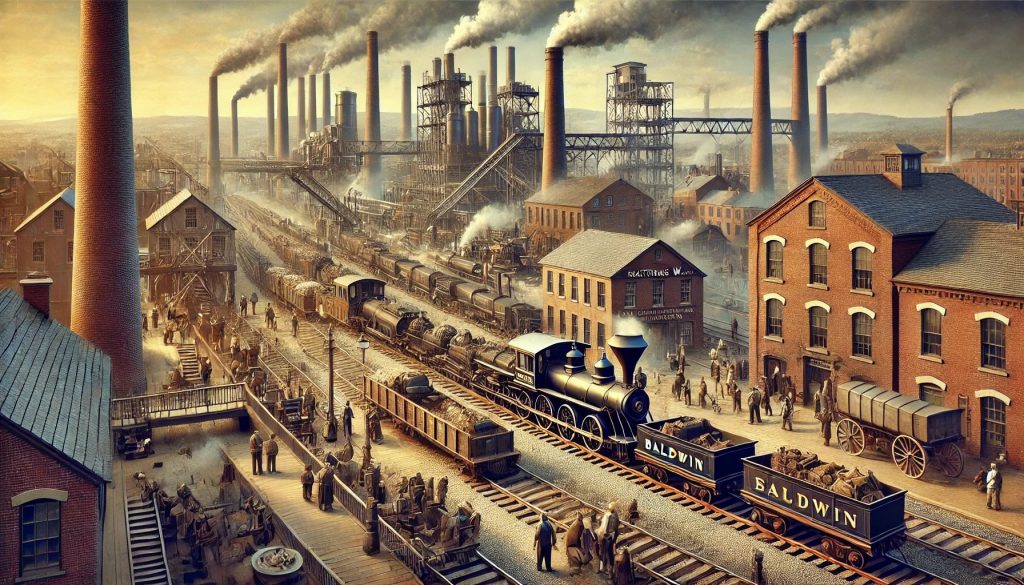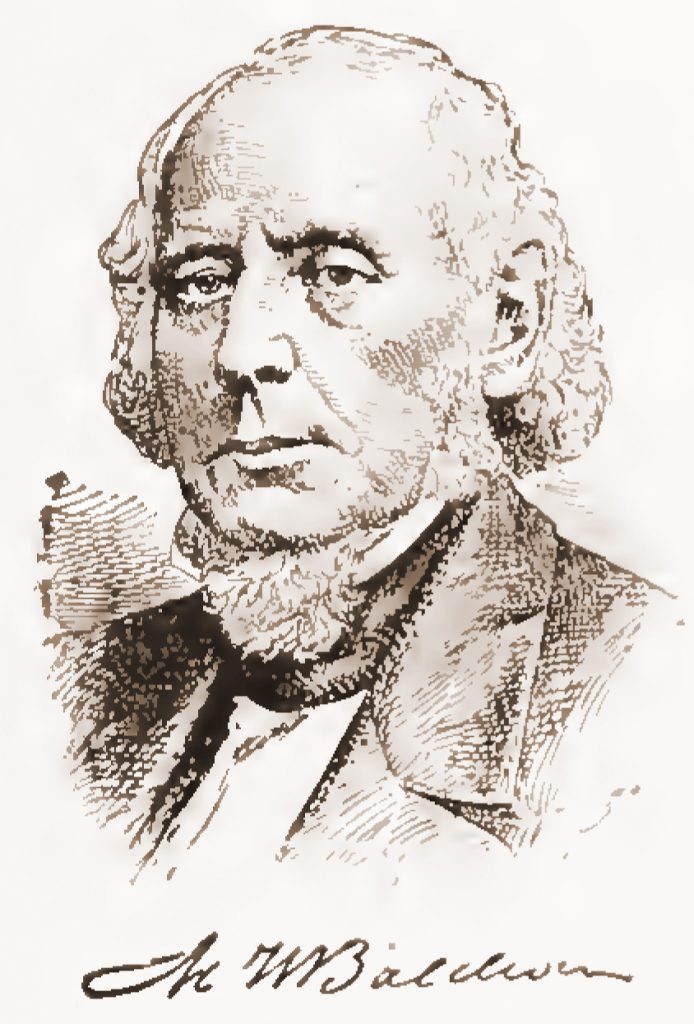The early industrial landscape of America was characterized by an unprecedented surge in technological advancements and infrastructural growth. Among the many industries that flourished during this time, railroads emerged as a critical factor in shaping the economic and social landscape of the United States. At the heart of this revolution was Matthias W. Baldwin, an inventor, manufacturer, and entrepreneur who made significant contributions to the rise of American railroads through his development of innovative steam locomotives. Baldwin’s legacy is not only rooted in his mechanical genius but also in his commitment to social causes, such as labor reform and abolitionism, which reflect the broader context of his life and times.

The Early Life of Matthias W. Baldwin
Born on December 10, 1795, in Elizabethtown, New Jersey, Matthias W. Baldwin displayed an early aptitude for mechanics and invention. His father, a carriage maker, passed away when Baldwin was still a child, leaving his mother to raise him. After receiving a basic education, Baldwin was apprenticed to a jeweler at the age of sixteen, which was a typical path for young men of his background. The skills he learned during his apprenticeship—precision work, attention to detail, and an understanding of machinery—would serve him well in his later career.
Baldwin’s early work as a jeweler and silversmith introduced him to metallurgy and craftsmanship, but it was his innate curiosity about the world of machines that led him into the field of steam engines. In 1825, Baldwin established a small workshop in Philadelphia, where he began to repair and manufacture steam engines for various industries. This was a pivotal moment in Baldwin’s career, as it marked the beginning of his lifelong association with steam power.
The Birth of the Baldwin Locomotive Works
The year 1831 was a turning point for Matthias Baldwin and for the future of American railroads. Rail transport was still in its infancy in the United States, but Baldwin saw its potential. The first locomotive to operate on American soil, the “Stourbridge Lion,” had been imported from England in 1829, but it was clear that American railroads would need domestically produced engines tailored to the unique demands of the U.S. landscape. Baldwin decided to meet that need by applying his mechanical expertise to locomotive design.
In 1831, Baldwin built his first locomotive, a model designed to demonstrate the principles of steam power to the general public. This small-scale locomotive caught the attention of the Philadelphia, Germantown, and Norristown Railroad (PG&N), which was in need of a full-sized engine. Baldwin’s success with the model locomotive led to a contract to build a full-sized version, which he named “Old Ironsides.” Completed in 1832, “Old Ironsides” was a 5-ton locomotive that became one of the earliest successful steam engines produced in the United States.
The success of “Old Ironsides” marked the formal founding of Baldwin Locomotive Works, a company that would grow to become one of the largest and most influential locomotive manufacturers in the world. Baldwin’s reputation as a skilled and innovative engineer spread rapidly, and his business grew accordingly. The demand for steam locomotives increased as railroads expanded across the country, and Baldwin was at the forefront of this expansion.
Baldwin’s Technological Innovations
One of Baldwin’s key contributions to the railroad industry was his ability to adapt and improve upon existing locomotive designs. Baldwin’s early locomotives were based on British models, but he quickly recognized that the conditions in the United States—such as the rugged terrain and the use of wood rather than coal as fuel—required significant modifications. Baldwin’s ability to customize locomotives to meet the specific needs of American railroads set him apart from his competitors.
Among Baldwin’s most important innovations was the development of the flexible truck, which allowed locomotives to navigate the sharp curves and uneven tracks that were common on early American railroads. This invention helped improve the stability and safety of trains, allowing them to travel at higher speeds and more efficiently. Baldwin also focused on improving the efficiency of steam engines by experimenting with different boiler designs and materials, resulting in locomotives that were more powerful and fuel-efficient.
Baldwin’s commitment to quality and innovation earned him a reputation as a reliable manufacturer, and his locomotives were widely regarded as some of the best in the industry. By the 1850s, Baldwin Locomotive Works had become the largest locomotive manufacturer in the United States, producing hundreds of engines each year for railroads across the country. Baldwin’s ability to meet the growing demand for locomotives was a key factor in the rapid expansion of the American railroad network during this period.
Baldwin’s Impact on the American Railroad Industry
The expansion of the American railroad system in the 19th century was one of the most transformative developments in the nation’s history. Railroads connected cities and towns across vast distances, facilitating trade, commerce, and communication in ways that were previously unimaginable. Baldwin’s locomotives played a crucial role in this expansion, providing the reliable and efficient engines that powered the trains that crisscrossed the country.
One of the most significant aspects of Baldwin’s impact on the railroad industry was his ability to produce locomotives at scale. Baldwin Locomotive Works was one of the first manufacturers to adopt a system of mass production for locomotives, which allowed the company to meet the ever-increasing demand for steam engines. This system of production not only helped Baldwin’s business grow but also contributed to the overall growth of the railroad industry by making locomotives more affordable and accessible to a wider range of railroads.
Baldwin’s contributions to the railroad industry extended beyond the production of locomotives. He was also involved in efforts to standardize railroad technology and practices, which helped improve the safety and efficiency of the industry as a whole. Baldwin was a strong advocate for the adoption of uniform track gauges and standardized operating procedures, which helped railroads operate more smoothly and reduced the risk of accidents.
Baldwin’s Social Contributions
In addition to his contributions to the railroad industry, Matthias Baldwin was a man of strong social convictions. He was deeply committed to the causes of labor reform and abolitionism, and he used his position as a successful businessman to advocate for social change.
Baldwin was an early supporter of labor rights, and he made efforts to improve the working conditions of his employees. At a time when many industrialists exploited their workers with long hours and low pay, Baldwin took a more progressive approach. He implemented fair labor practices at his factory and was known for treating his workers with respect and dignity. Baldwin’s factory was also one of the few that employed African American workers, and he was an outspoken advocate for their rights.
Baldwin’s commitment to abolitionism was particularly notable. He was a vocal opponent of slavery and used his wealth and influence to support the abolitionist movement. Baldwin contributed financially to anti-slavery organizations and was involved in efforts to provide education and employment opportunities for freed slaves. His advocacy for social justice earned him both praise and criticism, but Baldwin remained steadfast in his beliefs.
The Legacy of Matthias W. Baldwin
Matthias W. Baldwin passed away on September 7, 1866, but his legacy lived on through the company he founded and the impact he had on the railroad industry. Baldwin Locomotive Works continued to grow after his death, becoming one of the largest and most successful locomotive manufacturers in the world. The company produced tens of thousands of locomotives over the course of its history, many of which were exported to countries around the globe.
Baldwin’s contributions to the rise of American railroads cannot be overstated. His innovative designs and manufacturing techniques helped drive the expansion of the railroad network, which in turn fueled the growth of the American economy. Railroads became the backbone of the nation’s transportation system, and Baldwin’s locomotives were at the heart of that system.
Beyond his technical achievements, Baldwin’s commitment to social causes such as labor reform and abolitionism reflected his belief that industrial progress should be accompanied by social progress. His efforts to improve the lives of his workers and to fight for the rights of African Americans set him apart from many of his contemporaries and left a lasting impact on American society.
Conclusion
Matthias W. Baldwin was a visionary inventor and entrepreneur whose contributions to the rise of American railroads were instrumental in shaping the nation’s industrial landscape. Through his development of innovative steam locomotives and his commitment to mass production, Baldwin helped fuel the expansion of the railroad network, which played a critical role in the growth of the American economy. His impact extended beyond the railroad industry, as he was also a champion of labor rights and abolitionism, using his influence to advocate for social change. Baldwin’s legacy continues to be felt today, as the railroads he helped build remain a vital part of the nation’s infrastructure, and his contributions to social justice serve as a reminder of the importance of using industrial progress for the greater good.

